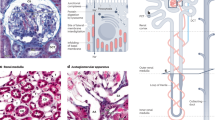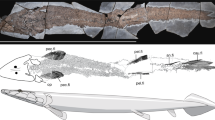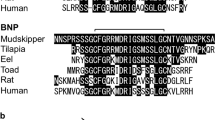Abstract
So long ago as 1858, Staedeler and Frerichs1 discovered the presence of large amounts of urea in three species of elasmobranch fishes. Many more have been examined since that time, and it is known to-day that many, and probably all marine, elasmobranchs, including the Holocephali, contain 2–2.5 per cent of urea in their blood and tissues. Freshwater species contain only about 1 per cent of urea. The physiological significance of the resulting uræmia has been ably reviewed by Smith2.
This is a preview of subscription content, access via your institution
Access options
Subscribe to this journal
Receive 51 print issues and online access
$199.00 per year
only $3.90 per issue
Buy this article
- Purchase on Springer Link
- Instant access to full article PDF
Prices may be subject to local taxes which are calculated during checkout
Similar content being viewed by others
References
Staedeler, G., and Frerichs, F. T., J. prakt. Chem., 73, 48 (1858).
Smith, H. W., Biol. Rev., 11, 49 (1936).
Baldwin, E., Biol. Rev., 8, 74 (1932).
Grisolia, S., in “Methods in Enzymology” (New York), 2, 350 (1955).
Ratner, S., in “Methods in Enzymology” (New York), 2, 356 (1955).
Archibald, R. M., J. Biol. Chem., 157, 507 (1945).
Jones, M. E., Spector, L., and Lipmann, F., J. Amer. Chem. Soc., 77, 819 (1955).
Author information
Authors and Affiliations
Rights and permissions
About this article
Cite this article
BALDWIN, E. Ureogenesis in Elasmobranchs. Nature 181, 1591–1592 (1958). https://doi.org/10.1038/1811591a0
Issue Date:
DOI: https://doi.org/10.1038/1811591a0
Comments
By submitting a comment you agree to abide by our Terms and Community Guidelines. If you find something abusive or that does not comply with our terms or guidelines please flag it as inappropriate.



